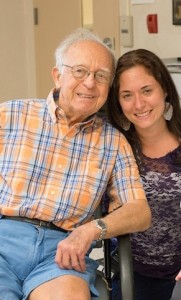By Cecil Harris
Injuries such as concussions or torn ligaments can be detrimental to young athletes and dancers. These tips from Adelphi alumni provide guidance for athletes, dancers, and their parents on how to avoid these injuries.
For Athletes and Their Parents
from Chris Armas ’94 and Mike Gavagan, M.S. ’03
Prepare properly. Eat right and
sleep.
Set aside time to rest and recover. Many teens play three or four sports
and their bodies break down before they get to college.
Don’t overdo it. Athletes are more susceptible to
injury when they practice or play too long.
Listen to your body. If your body tells you that you’re
tired, rest.
Get proper footwear. Foot injuries can be prevented this
way. Some kids play so much that they burn through the footwear they have and are
running on nothing.
For Dancers and Their Parents
from
Linda Hamilton, Ph.D. ’89
More is not necessarily better. Many injuries occur after the fourth
class or fourth hour of dancing in a day.
Be careful of the teacher. Don’t work with a teacher who is
demeaning or harshly critical of dancers. Dance should be fun. (Dr. Hamilton
danced for the legendary George Balanchine in the New York City Ballet. Instead
of calling out a dancer by name for making a mistake, he used pop culture
references to make his point. When Dr. Hamilton erred during one rehearsal, he
said, “More Parks sausages, Mom. Please!”)
Rest. It’s important to get eight hours of
sleep each day.
Let kids be kids. There’s hardly any downtime for
dancers. Kids need time to do other fun things.
Be sensitive to your perfectionism. Accept it. That’s an essential part
of why you became a dancer.
Excerpted from the spring 2015 issue of AU VU.
Excerpted from the spring 2015 issue of AU VU.


